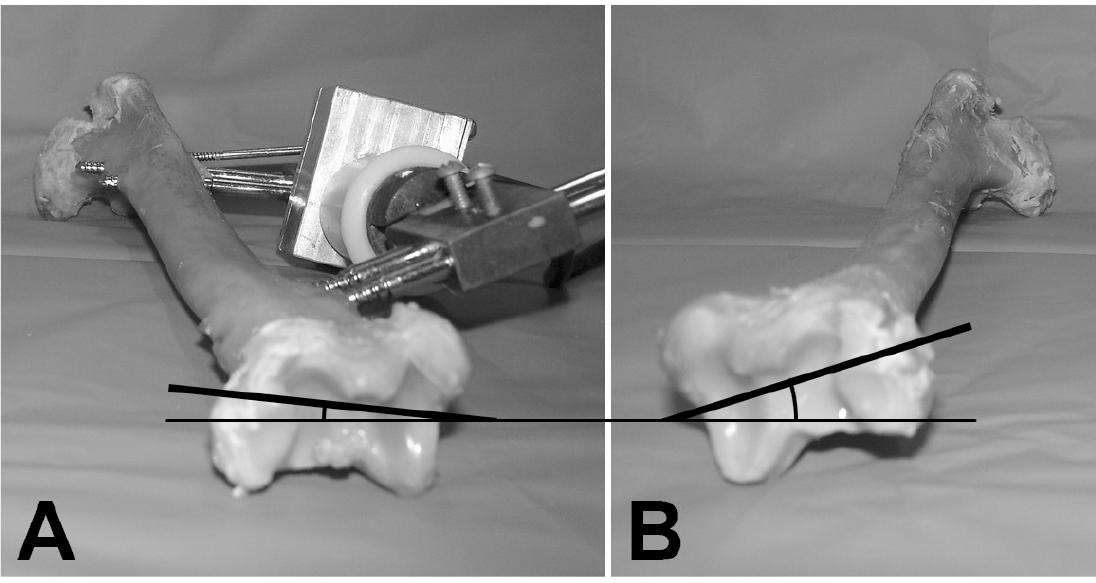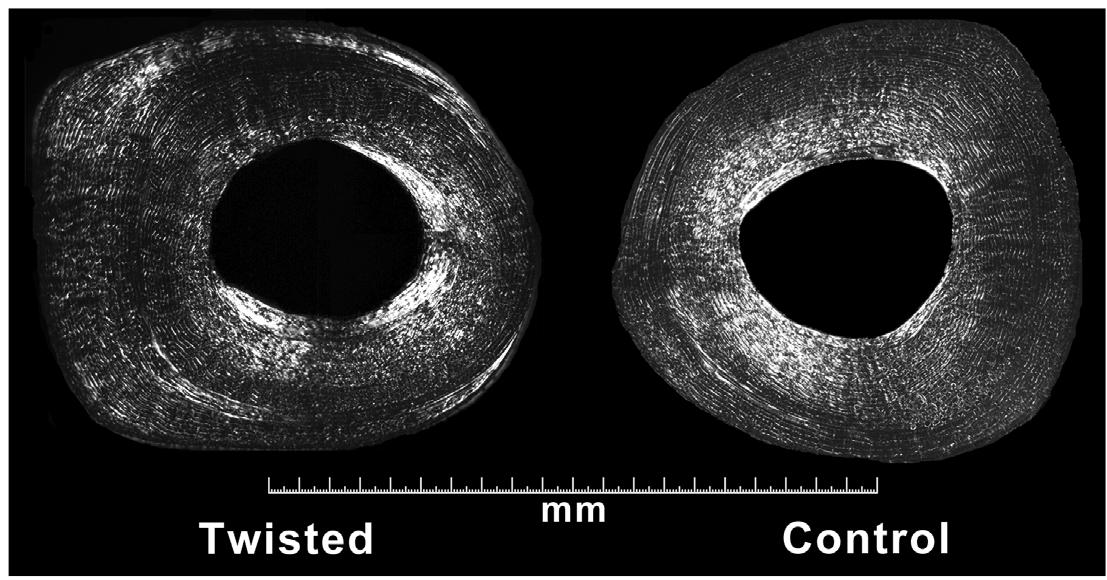PURPOSE:
To evaluate the effects of torsional force on the rotational axis of living lamb tibias.
METHODS:
An external fixator device was designed to apply rotation to the tibias of lambs. Once a week, the bone distal extremity was rotated 2º. After achieving ~20º of internal rotation, the turning was discontinued and the device was maintained in situ for one month and euthanasia occurred in group A (n=10) after this. In group B (n=9) euthanasia occurred three months after removing the device. Computed tomography scans evaluated the rotational angle; dual-energy X-ray absorptiometry assessed the bone mineral density, and conventional and polarized light microscopy studied the bone microstructure.
RESULTS:
In group A, the mean angle of the external rotation in the control tibias was 24º and 8º in the twisted tibias (p<0.0001); in group B, the angle was 23º (control) and 7º (twisted, p<0.0001), with no differences between groups A and B (p=0.9567). The BMD increased in the twisted tibias in group A (p<0.0001) and in group B (p=0.0023), with no between-group differences (p>0.05). Microscopically, the twisted tibias showed asymmetrical subperiosteal bone deposition on the lateral cortex surface.
CONCLUSION:
Gradual torsion applied to the immature tibia significantly modified its rotational axis.
Orthopedic Fixation Devices; Tibia; Bone Malalignment; Torsion, Mechanical; Sheep





